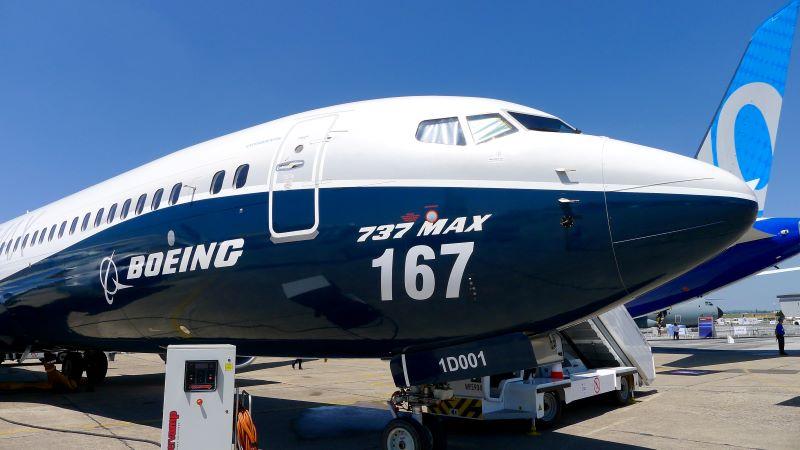
Boeing’s familiar end-of-quarter activity surge helped the company make December its best delivery month of 2022, with 69 customer hand-overs, including 53 737 MAXs.
December’s total also included 10 787 deliveries, marking the most productive single month for that program since March 2020.
Both figures suggest Boeing’s efforts to shrink large stored inventories in both programs is gaining momentum. Current monthly production rates are about 31 per month on the 737 MAX and 3.5 per month for the 787.
Regular monthly delivery figures above these production rates are seen as critical in Boeing’s effort to shift its financial fortunes by collecting delivery payments and shedding costs of keeping completed aircraft on hand. That means a steady flow of aircraft from the 787 inventory that built up during the production-quality crisis that all but halted deliveries from October 2020 through July 2022, and the 737 MAX inventory accumulated during the model’s prolonged grounding and delivery pause in 2019 and 2020.
Aviation Week Network’s Fleet Discovery figures show Boeing’s December deliveries included 16 aircraft from its stored 737 MAX inventory, defined as airframes rolled out before deliveries re-started in December 2020. The stored inventory, which topped out at about 460 aircraft, is now down to around 80, Aviation Week figures show.
Boeing delivered 374 737 MAXs in 2022, as well as 13 other 737 models, including business jets and military variants. The total topped its most recent full-year projection of 375 737 program deliveries, though that target was adjusted downward from more than 500 at the beginning of the year due to several factors.
Boeing’s preliminary target for 2023 is 425-450 737 MAX deliveries.
Hitting it will require both a production ramp-up before year-end as well as ensuring it has customers for the remaining aircraft in inventory. Some are destined for Chinese carriers, which have not put any 737 MAXs back in service following the March 2019 global grounding. Boeing has been working to find buyers for already built 737 MAXs that do not have customers, including some originally intended for Chinese operators.
Among the 10 787 deliveries were three airframes built in 2021, pulled from stored inventory, and re-worked to correct myriad production-quality issues. The rest rolled out in August 2022 or later, Aviation Week data show.
The 787 stored inventory topped out at 120 airframes. Each of them needs extensive inspection and re-work to ensure they meet Boeing’s design specifications—and can earn needed FAA approval for delivery. Since deliveries re-started in August 2022, Boeing has handed over 31 787s aircraft from this stored inventory. Of these, 19 were rolled out in 2021 or earlier, while the rest were completed in April 2022 or later.
Boeing closed 2022 with 480 deliveries. December’s monthly total was the year’s highest, followed by 51 in both June and September, and 41 in March—each coming the month prior to the company’s quarterly earnings update.
The 2022 delivery total was a significant improvement over 2021’s 340, thanks to increased 737 MAX and 787 program activity. The figure remains far below the company’s healthier days, which saw it average 760 deliveries per year in the five-year period through 2018. The company’s annual delivery figures collapsed in 2019 following the 737 MAX global grounding and a related delivery pause that lasted 21 months and have stayed low due in large part to lingering ramifications of the 737 and 787 program issues as well as the global traffic downturn in 2020-2021.
Boeing added 203 net orders to its backlog in December, most coming from United’s massive 200-aircraft order split evenly between 787s and 737 MAXs. Of these, 20 were already in the pre-December backlog—10 787s and 10 737 MAXs—as orders from an unidentified customer. Boeing also booked unidentified customer orders for nine 737 MAXs and six 787s in December.
Cancellations totaled 47: two Air Lease Corp. 787s, 24 SMBC Capital 737 MAXs, 10 Akasa Air 737 MAXs, eight BOC Aviation 737 MAXs, and three 737 MAXs by unidentified customers. Full-year cancellations, which included some delivery-position shuffling, totaled 161.
Boeing booked 774 net orders in 2022, up from 479 in 2021. Its official backlog sat at 4,578 as of Dec. 31: 3,628 737 MAXs, 25 other 737 variants, one 747, 106 767s, 373 777s, and 505 787s.
The company’s official figure does not include 852 orders flagged as risky and slotted in the company’s ASC 606 accounting category. These comprise 659 737s, 127 777s, and 66 787s. Full-year ASC 606 activity saw a net total of 34 orders moved from the category back into the official backlog.



